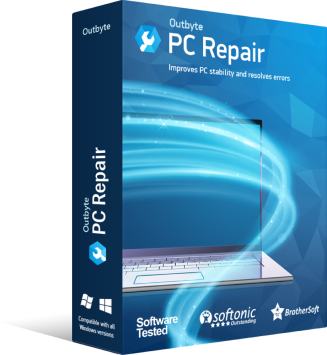Repair Utility
- File name: pc-repair-setup.exe
- Tool''s Developer: Outbyte
- Certified by: Symantec
- Download Size: 24 MB
- Downloaded: 1,143,473 times
-
Rating:

 Start Download
Start Download
Windows Operating Systems



802.11n Wi-Fi Adapter Driver
The 802.11n Wi-Fi adapter is a critical component for wireless connectivity, offering faster speeds and improved range compared to older standards. However, driver-related issues can disrupt your connection, leading to slow speeds, intermittent drops, or complete failure to detect networks. This article explores the root causes of 802.11n driver problems, provides actionable solutions, and summarizes key takeaways to ensure seamless wireless performance.
Common Causes of 802.11n Wi-Fi Adapter Driver IssuesDriver problems rarely occur without an underlying trigger. Below are the most frequent culprits behind 802.11n Wi-Fi adapter malfunctions:
Outdated or Corrupted DriversOver time, drivers may become outdated due to missed updates or incompatible software changes. Outdated drivers lack optimizations for newer operating systems or security patches, leading to performance issues. Corruption can also occur during incomplete installations, sudden system shutdowns, or malware attacks.
Operating System UpdatesWindows or macOS updates often introduce changes that conflict with existing drivers. For example, a Windows 10 update might deprecate older driver versions, leaving the 802.11n adapter unsupported until a compatible update is installed.
Hardware ConflictsConflicts between the Wi-Fi adapter and other hardware components (e.g., USB devices, Bluetooth peripherals) can cause instability. Additionally, faulty hardware, such as a damaged adapter or motherboard slot, may mimic driver issues.
Incorrect Network SettingsMisconfigured network settings, such as an improperly assigned IP address or disabled adapter settings, can prevent the driver from functioning correctly. Power-saving modes that disable the adapter to conserve energy may also interfere.
Third-Party Software InterferenceAntivirus tools, VPNs, or firewall software might block the driver’s operations. Similarly, remnants of old network utilities can create conflicts with the current driver.
Step-by-Step Guide to Fixing 802.11n Driver IssuesResolving driver problems requires a systematic approach. Follow these steps to restore your Wi-Fi connectivity:
Step 1: Update the Driver- Open Device Manager (press Windows + X and select it from the menu).
- Expand Network Adapters, right-click your 802.11n Wi-Fi adapter, and select Update Driver.
- Choose Search automatically for updated driver software and follow prompts.
- If Windows finds no updates, visit the manufacturer’s website (e.g., Intel, Broadcom) to download the latest driver manually.
- In Device Manager, right-click the adapter and select Uninstall Device. Check Delete the driver software if prompted.
- Restart your computer. Windows will attempt to reinstall the driver automatically.
- If the issue persists, install the driver manually using the file downloaded from the manufacturer’s site.
- If the problem started after a recent update, right-click the adapter in Device Manager and select Properties.
- Navigate to the Driver tab and click Roll Back Driver (if available).
- In Device Manager, right-click the adapter and select Properties.
- Under the Power Management tab, uncheck Allow the computer to turn off this device to save power.
- Disconnect peripherals (e.g., USB devices) and disable Bluetooth temporarily.
- Test the adapter in another USB port or device to rule out hardware failure.
- Open Settings > Network & Internet > Status > Network Reset.
- Click Reset now to restore default network configurations.
- Install pending Windows/macOS updates, which may include critical driver fixes.
- Use a trusted antivirus tool to eliminate malware that could be tampering with drivers.
802.11n Wi-Fi adapter driver issues are often solvable with routine maintenance and troubleshooting. Outdated software, OS updates, and conflicting settings are typically to blame, but systematic steps like updating drivers, adjusting power configurations, and resetting network settings can resolve most problems. Always ensure your operating system and drivers are up-to-date to prevent compatibility issues. If all else fails, consider consulting a technician to rule out hardware failure or deeper system corruption. By staying proactive, you can enjoy the full benefits of your 802.11n adapter without interruptions.
|
Ultimate Photo Viewer: Organize, Enhance, and Share Your Memories – Discover the perfect tool to effortlessly organize your photo library, enhance images with powerful editing features, and seamlessly share cherished moments. Transform your memories with intuitive tools, advanced filters, and cloud integration, all in one user-friendly platform.
|
|
Learn how to enable Bluetooth on Windows 11 quickly with this step-by-step guide. Discover settings navigation, device pairing, and troubleshooting tips for seamless wireless connectivity.
|
|
Experience the perfect harmony of technology and passion. Drive the Sound explores cutting-edge innovations in audio engineering, empowering you to craft immersive soundscapes and elevate every listening moment.
|
|
The Intel Play QX3 Computer Microscope transforms your PC into a portal for exploring microscopic wonders. Capture real-time digital images and videos, magnify specimens up to 200x, and dive into hands-on science—ideal for curious minds, classrooms, and at-home discovery.
|
|
Struggling with the 'No Audio Output Device Installed' error in Windows 10? Learn quick fixes like updating drivers, enabling audio devices via Device Manager, running troubleshooting tools, and checking hardware connections to restore sound on your PC.
|
|
The TEAC USB Floppy Drive offers a seamless solution for accessing legacy data from 3.5-inch floppy disks while delivering high-speed performance for modern workflows. Built with durable construction, it ensures reliable file retrieval, transfer, and storage, bridging the gap between vintage media and current USB-compatible devices. Ideal for archivists, professionals, and retro tech enthusiasts, this drive combines backward compatibility with efficient plug-and-play functionality.
|
|
Keep your PC running smoothly by updating its drivers. This quick guide explains how to identify outdated drivers, find reliable sources for updates, and install them correctly to boost system speed, enhance stability, and fix compatibility issues. Learn simple steps to optimize performance in minutes.
|
|
Virtual Audio Cable enables effortless audio routing between apps, creating virtual connections for real-time streaming. Perfect for mixing, recording, or transferring audio across software without physical devices. Ideal for creators, streamers, and professionals seeking flexible, high-quality audio management. Simplify multitasking and enhance workflow with seamless integration.
|
|
Download the latest drivers for Intel Core i5-2400 CPU (3.10 GHz) compatible with Windows 10 (version 10.0). Ensure optimal performance, stability, and hardware compatibility for your system. Find official and updated drivers for chipsets, graphics, and peripherals here.
|
|
Discover how EOS Utility Tools streamline workflows, automate tasks, and optimize resource management to boost productivity. Unlock seamless integration, reduce downtime, and achieve peak performance for your projects or business operations with precision-driven solutions.
|
| See all queries |



